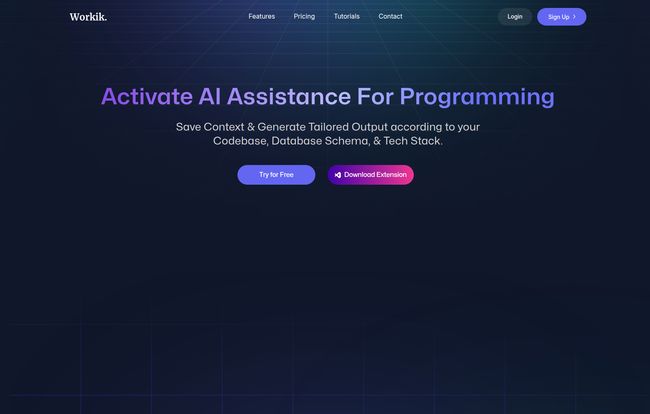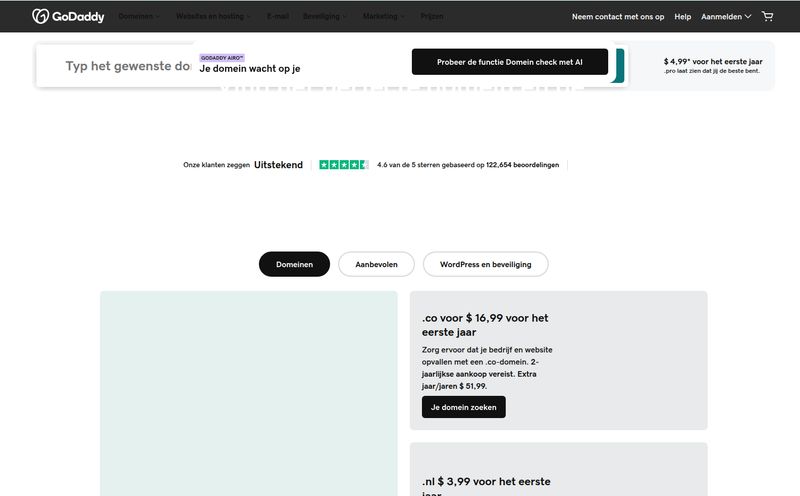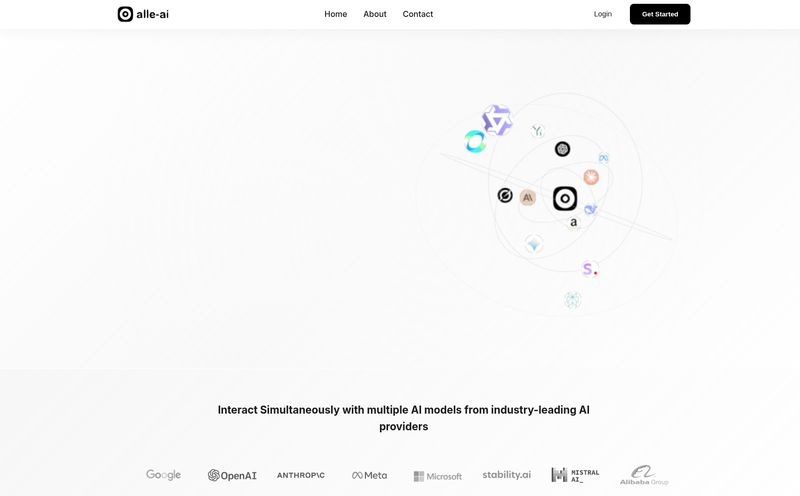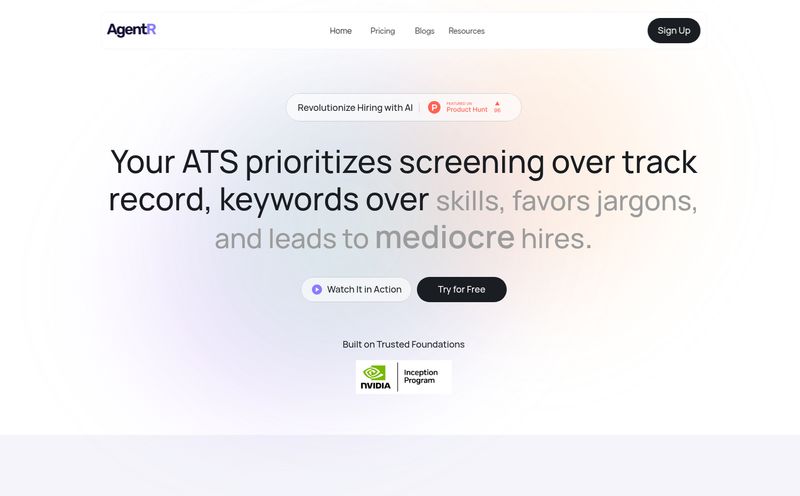In my years grinding away in the SEO and digital marketing world, I’ve seen more “game-changing” tools than I can count. Every week there's a new AI platform that promises to revolutionize my workflow, make me a 10x whatever, and probably make my morning coffee too. Most of them are… well, they’re fine. But few have genuinely made me pause and go, “Huh. That’s actually different.”
The developer world is no different. The noise around AI coding assistants is deafening. You've got GitHub Copilot, you've got Tabnine, and a dozen others all vying for a spot in your IDE. So when I heard about Workik AI, I was skeptical. Another AI co-pilot? Great. But then I started digging, and what I found wasn’t just a glorified autocomplete. It felt more like a full-fledged development partner.
So, What Exactly Is Workik AI Anyway?
Imagine you hire a new junior developer. They’re smart, they know how to code, but they have zero context about your project. You have to spend weeks getting them up to speed on your database schema, your API endpoints, your existing codebase, and your team's weird coding quirks. Now, imagine if you could just… plug their brain into your entire project history. That’s the vibe I get from Workik AI.
At its core, Workik AI is a context-aware development platform. It’s not just looking at the single file you have open. It integrates directly with your source code repositories (like GitHub, GitLab), your databases (both SQL and NoSQL), and even your project management tools like Jira. It builds a comprehensive understanding—a 'brain', if you will—of your entire application stack. This means when you ask it for help, it’s not just guessing based on a generic language model; its giving you suggestions based on your actual code, your data models, and your API structure. That’s a pretty big deal.

Visit Workik AI
The Standout Features That Genuinely Impressed Me
I’m a features guy. I like to see what’s under the hood. While “AI-powered code generation” is the headline, the supporting cast of features is where Workik really starts to shine.
Context is King: The AI’s Project Brain
This is the secret sauce. By connecting to your whole ecosystem, Workik uses a vector database to create a searchable, intelligent map of your project. This is what allows for truly context-aware assistance. It means you can ask it complex questions like, “Generate a React component that fetches user data from the `users` table and displays it according to the design in ticket JIRA-123.” A standard AI might choke on that. Workik, having ingested all that context, can actually give you something useful. It's less of a parrot and more of a seasoned colleague.
More Than Just a Code Monkey
Look, generating boilerplate is cool and saves time. But Workik goes further. I was particularly interested in its database tools. You can literally visualize your database schema, and then have the AI model it or even generate complex queries for you. Need some realistic-looking fake data for testing? It has a mock data generator. This suite of tools moves it from a simple “coding assistant” to a more holistic “development environment assistant.” It’s about reducing the friction of context-switching, which, lets be honest, is where half our day disappears.
It Plays Nice with Your Team
For a lot of us, development isn't a solo sport. Workik seems to get this. It’s built with team collaboration in mind, offering shared workspaces and permission controls. The integrations with Slack and Microsoft Teams via AI Bots are a clever touch. Instead of a developer having to pull up the whole app to answer a query from a project manager, they can potentially interact with the project's knowledge base right from their chat client. That’s a small thing that can have a big impact on daily workflow and reducing interruptions.
Let's Talk Money: A Peek at Workik's Pricing
Alright, the all-important question: what’s this going to cost me? The pricing structure is based on tiers and a system of “AI Tokens,” which is becoming pretty standard for these kinds of services. Think of tokens as the currency your AI uses to think—simple tasks cost fewer tokens, complex ones cost more.
Here’s a simplified breakdown of their plans:
| Plan | Price | Key Features |
|---|---|---|
| Trial | Free | 10 free daily requests, vector search, use your own API key. A great way to test the waters. |
| Starter | $15/month | Unlimited requests, 20M standard AI tokens, unlimited users, AI bots. Solid for small teams and individuals. |
| Premium | $30/month | More tokens (40M standard + 3M advanced), plus dedicated support. For more active teams. |
| Elite | $80/month | A huge bucket of tokens (80M standard + 8M advanced), usage reports, priority support. For power users and larger businesses. |
| Custom | Contact for Price | Enterprise-grade solution with custom everything, from security to support. |
(Note: Prices and token amounts are based on information available at the time of writing and may change. Always check the official pricing page for the latest details.)
My take? The free trial is genuinely useful, not just a crippled demo. The Starter plan at $15 feels very reasonably priced for the amount of productivity grease it promises. The token system is something you'll have to get a feel for, but it’s a fair way to price based on usage rather than just seat licenses.
The Good, The Bad, and The Code-y
No tool is perfect. After spending time with Workik, here’s my honest assessment. The biggest advantage, without a doubt, is the massive potential for a productivity boost. By deeply understanding your project, it cuts down on the mental overhead and tedious tasks that plague a developer’s day. Supporting all programming languages is a huge plus, meaning you dont have to find a new tool if you switch from Python to Rust. The team-focused features also show a forward-thinking approach to how modern software is built.
On the flip side, there are a few things to be aware of. The platform's power is tied to its token system, so heavy users on lower tiers might need to keep an eye on their consumption. Getting everything set up—connecting your repos, databases, and so on—requires an initial time investment. It’s not a magic wand you can just wave. And, naturally, the most powerful AI models and features are reserved for the higher-priced tiers, which is standard business practice but something to factor into your decision.
Who Is This Really For?
So, who should be giving Workik AI a serious look? In my opinion:
- Solo Developers & Freelancers: The Starter plan could be a huge force multiplier, acting as a virtual junior dev and QA tester rolled into one.
- Small to Mid-Sized Teams: This seems to be the sweet spot. The collaborative features, shared context, and integrations can streamline communication and accelerate development cycles significantly.
- Large Enterprises: The custom plan, with its focus on security and dedicated support, is clearly tailored for large organizations that need a powerful, secure, and scalable solution to improve developer efficiency across the board.
My Final Verdict on Workik AI
I came in a skeptic, and I'm walking away intrigued. Workik AI isn't just another AI autocomplete tool. It's an ambitious attempt to build a truly intelligent development partner. The emphasis on full-stack context is, for me, the real innovation and the key to unlocking genuine productivity gains.
Is it going to replace human developers? Of course not. But is it a tool that can make good developers faster, more efficient, and less bogged down by tedious work? Absolutely. It's a power tool for the modern dev's toolbox. If you’re feeling the pain of context-switching and dream of an assistant that actually gets your project, I’d say giving the Workik AI free trial a spin is a no-brainer.
Frequently Asked Questions
1. How do the AI Tokens in Workik actually work?
Think of them as credits for AI processing. Every request you make—generating code, creating a database model, answering a question—consumes a certain number of tokens. Simple requests use fewer tokens, while more complex tasks that require more 'thought' from the advanced AI models will use more. The plans come with a monthly allowance of these tokens.
2. Is Workik AI compatible with any programming language?
Yes, one of its main strengths is that it's language-agnostic. Because it learns from your codebase, it can provide assistance whether you're working in Python, JavaScript, Java, C#, Go, or pretty much any other language or framework.
3. Can I customize the AI's behavior for my team's specific needs?
Yes. You can provide custom instructions and context to guide the AI's responses, helping it adhere to your team's specific coding standards, architectural patterns, and best practices. This customization is key to making it feel like a true part of your team.
4. What happens if I go over my monthly token limit?
This typically depends on your plan. Generally, you might have the option to purchase additional token packs or upgrade your plan. For the most accurate information, it's best to check their official documentation or contact their support team, as policies can change.
5. Is it complicated to set up?
There is an initial setup process where you need to connect your data sources like GitHub repositories and databases. While it requires some configuration to get the full benefit of its context-aware features, the platform is designed to guide you through the process. The time you invest up front pays off in the quality of the AI's assistance later.
6. How does Workik AI handle data security and privacy?
According to their site, they prioritize data safety with user management and compliance assurance. For teams handling highly sensitive information, the Custom/Enterprise plan offers dedicated security implementations. As with any cloud tool, it's always wise to review their specific privacy policy and security documentation.
Reference and Sources
- Workik AI Official Website: https://workik.com/
- Workik AI Pricing Page: https://workik.com/pricing



